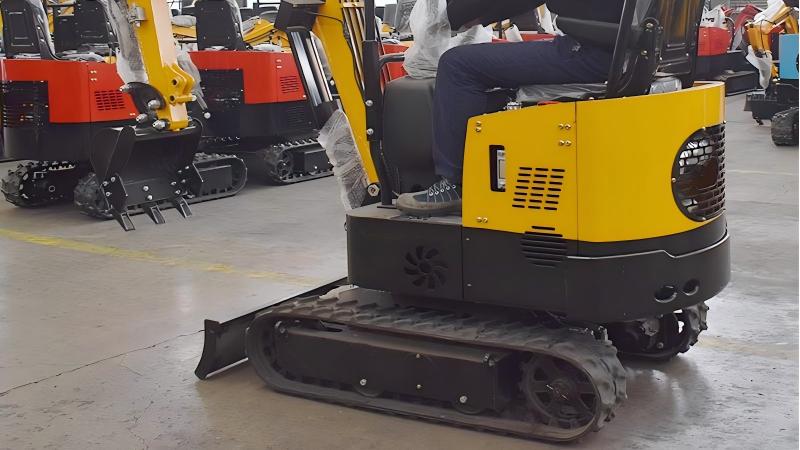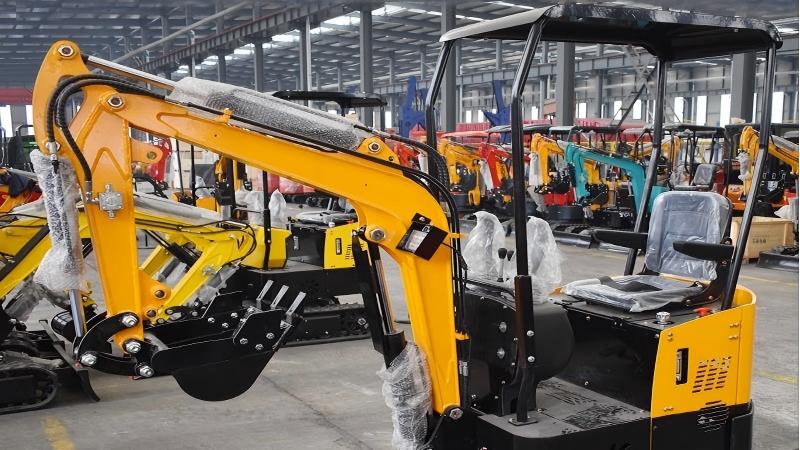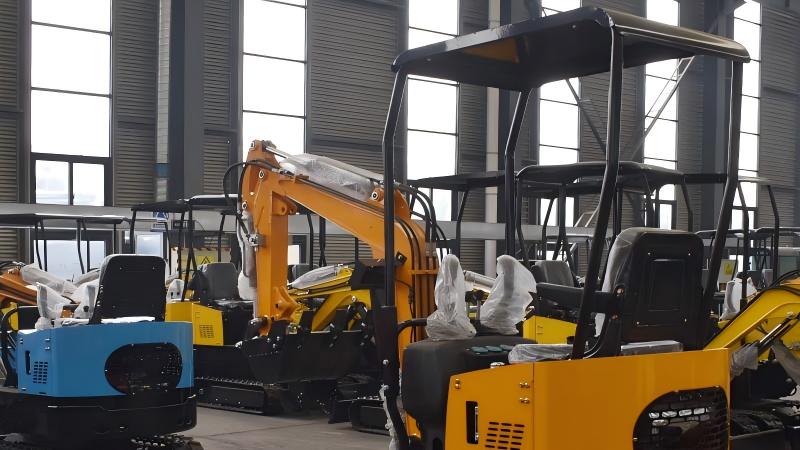Mini excavators are celebrated for their versatility, and a significant portion of this adaptability stems from the wide array of attachments available. These compact powerhouses, ranging from less than one ton to eight tons, can perform tasks far beyond simple digging, transforming into efficient tools for demolition, trenching, grading, loading, and even forestry. However, with so many options, choosing the right mini excavator attachment can be a daunting task. The incorrect attachment can lead to inefficient work, increased wear and tear on the machine, potential safety hazards, and ultimately, project delays and budget overruns. This article will guide you through the essential considerations and factors to help you select the perfect attachment for your mini excavator and specific job requirements.
Understanding Your Mini Excavator's Capabilities
Before even looking at attachments, you must intimately understand the capabilities and limitations of your mini excavator. Key specifications to consider include:
Operating Weight: This is the most fundamental factor. Lighter excavators (1-3 tons) have less hydraulic power and lifting capacity than heavier ones (5-8 tons). An attachment too heavy or demanding for your machine can compromise stability, reduce performance, or even damage the excavator's hydraulic system or boom.
Hydraulic Flow (GPM - Gallons Per Minute): Attachments like hydraulic breakers, augers, and mulchers require specific hydraulic flow rates to operate effectively. Ensure your excavator's auxiliary hydraulic circuit can provide the necessary flow for the attachment you're considering.
Hydraulic Pressure (PSI - Pounds Per Square Inch): Similar to flow, attachments have pressure requirements. Mismatched pressure can lead to inefficient operation or damage to the attachment.
Lift Capacity: If you plan to lift heavy objects with a grapple or lifting hook, know your excavator's maximum lift capacity at various reaches and heights.
Coupler Type: The quick coupler system on your excavator (e.g., pin-grabber, wedge-lock, S-style) must be compatible with the attachment's mounting system. Some attachments are direct-pin, while others require a specific quick coupler.
Auxiliary Hydraulics: Does your excavator have the necessary auxiliary hydraulic lines (single or dual-acting) to power the attachment? Some advanced attachments may require multiple hydraulic circuits.
Analyzing Your Job Requirements
Once you know your machine, shift focus to the job at hand. A thorough understanding of the task will dictate the most suitable attachment.
Type of Material:
Clay/Hardpan: Narrower buckets with sharper teeth, or a ripper tooth might be needed.
Rock/Concrete: A hydraulic breaker is essential for breaking, a ripper for prying.
Brush/Trees: Mulchers or grapples.
Loose Materials (Sand, Gravel): Wider, high-capacity buckets.
Specific Task:
Trenching: Narrow trenching buckets.
Grading/Finishing: Grading buckets (smooth edge).
Demolition: Hydraulic breakers, pulverizers, shears.
Drilling: Augers for post holes.
Lifting/Moving Debris: Grapples.
Land Clearing: Mulchers, root rakes.
Workspace Constraints:
Tight Spaces: Some attachments might be too large or require too much swing space. Consider attachments designed for confined areas.
Delicate Areas: If working near utilities or existing structures, precision attachments are crucial.
Frequency of Use:
Occasional Use: Renting an attachment might be more cost-effective.
Frequent/Daily Use: Investing in ownership of the attachment is usually justified.
Common Mini Excavator Attachments and Their Best Use Cases
Let's explore some of the most common attachments and their ideal applications:
Buckets:
Digging Bucket: The most basic. Available in various widths with teeth, ideal for digging trenches, foundations, and general excavation in soil. Choose width based on trench size.
Trenching Bucket: Very narrow with teeth, specifically designed for digging deep, narrow trenches for pipes and cables.
Grading/Ditching/Clean-up Bucket: Wider, shallower, and often toothless (with a smooth cutting edge). Perfect for fine grading, backfilling, shaping slopes, and cleaning ditches.
Skeleton/Riddle Bucket: Features gaps between the tines to allow smaller materials (soil, sand) to fall through while retaining larger debris (rocks, roots). Ideal for screening and sorting.
Heavy-Duty/Rock Bucket: Reinforced with thicker steel and stronger teeth, designed for abrasive materials, rock, and hard clay.
Hydraulic Breakers (Hammers): Essential for breaking hard materials.
Best Use: Demolishing concrete slabs, foundations, asphalt, rocks, and frozen ground.
Considerations: Match the breaker's energy class (ft-lb or joules) to your excavator's size. Ensure proper hydraulic flow and pressure.
Augers: Used for drilling holes.
Best Use: Digging post holes for fences, signs, trees, or piers.
Considerations: Different auger bit sizes are available. Ensure sufficient torque from the excavator's hydraulic system for the desired diameter and ground conditions.
Grapples: Versatile for handling various materials.
Best Use: Moving demolition debris, rocks, logs, brush, concrete chunks, and other irregular items.
Types: Demolition grapples (heavy-duty, often with rotating head), sorting grapples (more precise for separating materials), log grapples.
Plate Compactors: Used for soil compaction.
Best Use: Compacting soil in trenches, around foundations, or in confined spaces where a roller cannot reach.
Considerations: Ensure proper hydraulic flow and the ability to apply sufficient downforce.
Rippers: A single, sharp tooth.
Best Use: Breaking up hard compacted soil, asphalt, soft concrete, frozen ground, or pulling out roots.
Considerations: Puts significant stress on the excavator's arm; use with caution.
Thumbs: Mechanically or hydraulically operated extensions that work in conjunction with a bucket.
Best Use: Enhances the excavator's ability to grab and hold irregular objects (rocks, logs, debris) for easier loading or placement. Makes the bucket function like a basic grapple.
Considerations: Hydraulic thumbs offer greater precision and control.
Mulchers/Brush Cutters:
Best Use: Clearing overgrown vegetation, brush, and small trees in land clearing or trail maintenance.
Considerations: Require substantial hydraulic flow and pressure. Safety guards are crucial.
Key Decision-Making Factors
When narrowing down your choices, keep these points in mind:
Budget: What is your budget for purchasing or renting? High-quality attachments are an investment that pays off in efficiency and durability.
Return on Investment (ROI): For purchased attachments, how quickly will it pay for itself through increased efficiency or new job opportunities?
Rental vs. Purchase:
Rent if: You need the attachment for a single, short-term project; you want to test an attachment before buying; your usage is infrequent.
Purchase if: You use the attachment regularly (e.g., daily or weekly); it's a core part of your business operations; you want to eliminate rental logistics.
Manufacturer Compatibility: While many attachments are universal with the right coupler, some manufacturers offer proprietary attachments that work best with their machines.
Dealer Support and Parts Availability: Choose attachments from reputable dealers who offer good after-sales support, spare parts, and service.
Safety Features: Does the attachment have necessary safety guards, locking mechanisms, and clear operating instructions?
Conclusion
Choosing the right mini excavator attachment is crucial for maximizing the productivity, versatility, and safety of your machine. It's a decision that requires a careful balance between understanding your mini excavator's specifications, accurately assessing the demands of your specific jobs, and evaluating the various attachment options available. By taking the time to match the attachment to the task and your machine's capabilities, you'll ensure your mini excavator becomes an even more invaluable asset, delivering efficient results and a strong return on your investment. Don't hesitate to consult with your equipment dealer or experienced professionals for personalized advice; their expertise can be invaluable in navigating the vast world of mini excavator attachments.
Post time:Sep-25-2020



